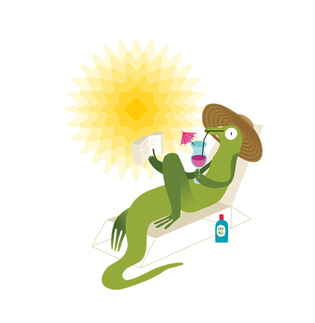
Alex Eben Meyer
Over eons, many anole lizards native to the Americas have had a simple way to avoid overheating: hide. For species that live among rocks or on the edge of forests, escaping for a few hours at the height of the day into shadows is a crucial survival skill. But as climate change turns up the temperature, this behavior may have a downside—as Martha Muñoz, an assistant professor of ecology and evolutionary biology, has found.
Muñoz studies lizards in the Dominican Republic and Appalachia, hiking through grasslands and forests to collect creatures and take their temperatures. Even closely related species can have different strategies for maintaining body temperature. “You have some lizards that wake up in the morning, and from sunup to sundown they are shuttling between sun and shade to maintain a certain body temp in a preferred range,” she says. “Then you have other species that don’t do that.”
It turns out that anoles living in full shade don’t have the option of moving to another spot to change their temperature, so they have evolved a higher heat tolerance than their shuttling counterparts. The ambient temperature has climbed over the last decade, putting these lizards under pressure to adapt—and they have, Muñoz has discovered: their heat tolerance has increased by 1.5 to 3 degrees C.
But the thermoregulators—those lizards who move between sun and shade—have not developed an increased heat tolerance. They may have to spend more time hiding. That means less time to find food, less time to mate, less time to do what they need to do to survive. Unable to withstand the growing heat, and lagging behind their shade-dwelling counterparts when it comes to adaptation, they may go extinct.
It’s not clear how long even the adapting lizards can keep up with climate change. “They are buying time, and time is running out,” says Muñoz.”
Slowing the pace of the warming climate is one way to help, as is maintaining shade in anole habitats, she notes. She continues to watch and record these lizards during this singular moment in the history of our planet. “I want to do what I can to help,” she says, “which is, basically, telling their story.”
 loading
loading